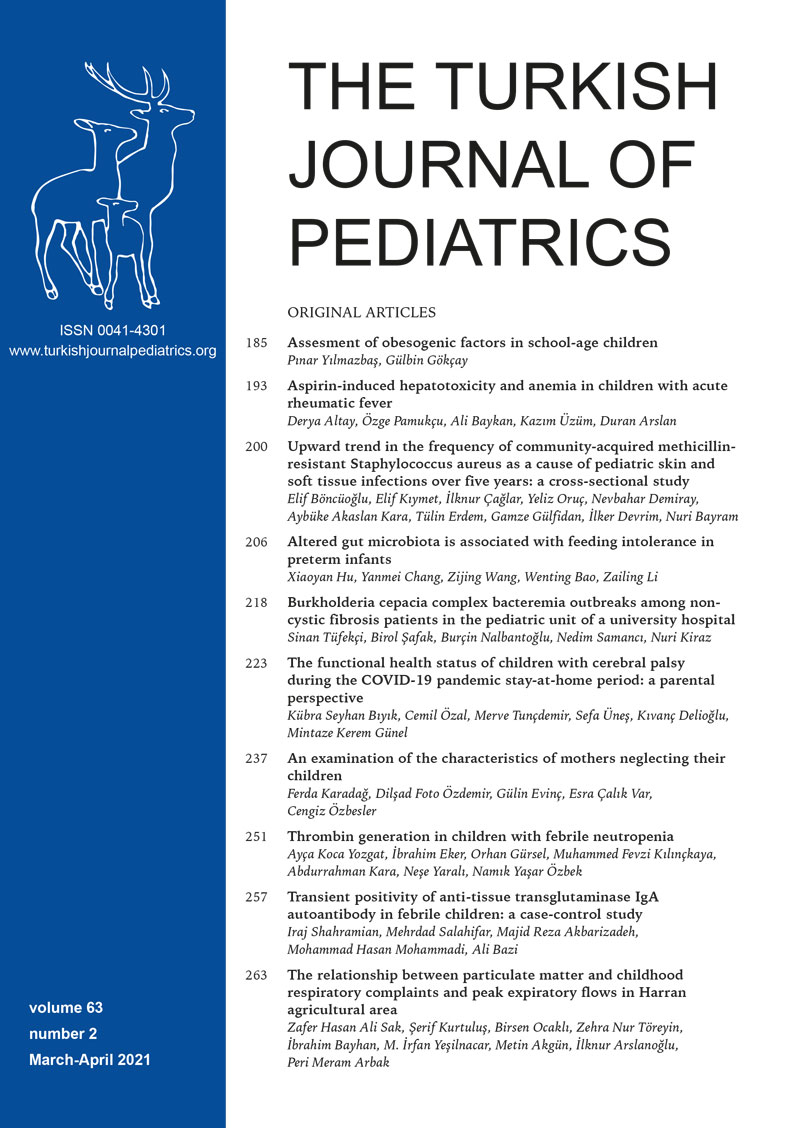Abstract
Background. Febrile neutropenia (FN) is a common and serious complication in patients with leukemia. Hemostasis and inflammation are two interrelated systems in response to infection. We aimed to investigate the course of thrombin formation in febrile neutropenia attack of children with acute lymphoblastic leukemia (ALL).
Methods. Thrombin generation was monitored in children treated for ALL at diagnosis of febrile neutropenia (FN) (t 0 ), at 48 < sup > th < /sup > hour of FN (t1) and after recovery from neutropenia (t 2 ).
Results. Twenty-nine patients and 50 healthy children as control were enrolled into the study. Mean endogenous thrombin potential (ETP) and mean peak value of thrombin results at t 1 were significantly higher than at t 0 , t 2 and control groups, respectively. A positive but statistically nonsignificant correlation between ETP values at t 1 and duration of neutropenia was observed.
Conclusion. Although thrombin generation is enhanced both due to chemotherapy or malignancy itself, our results revealed that thrombin formation also increased in neutropenic infection of children with leukemia.
Keywords: acute lymphoblastic leukemia, febrile neutropenia, thrombin generation
Copyright and license
Copyright © 2021 The Author(s). This is an open access article distributed under the Creative Commons Attribution License (CC BY), which permits unrestricted use, distribution, and reproduction in any medium or format, provided the original work is properly cited.














